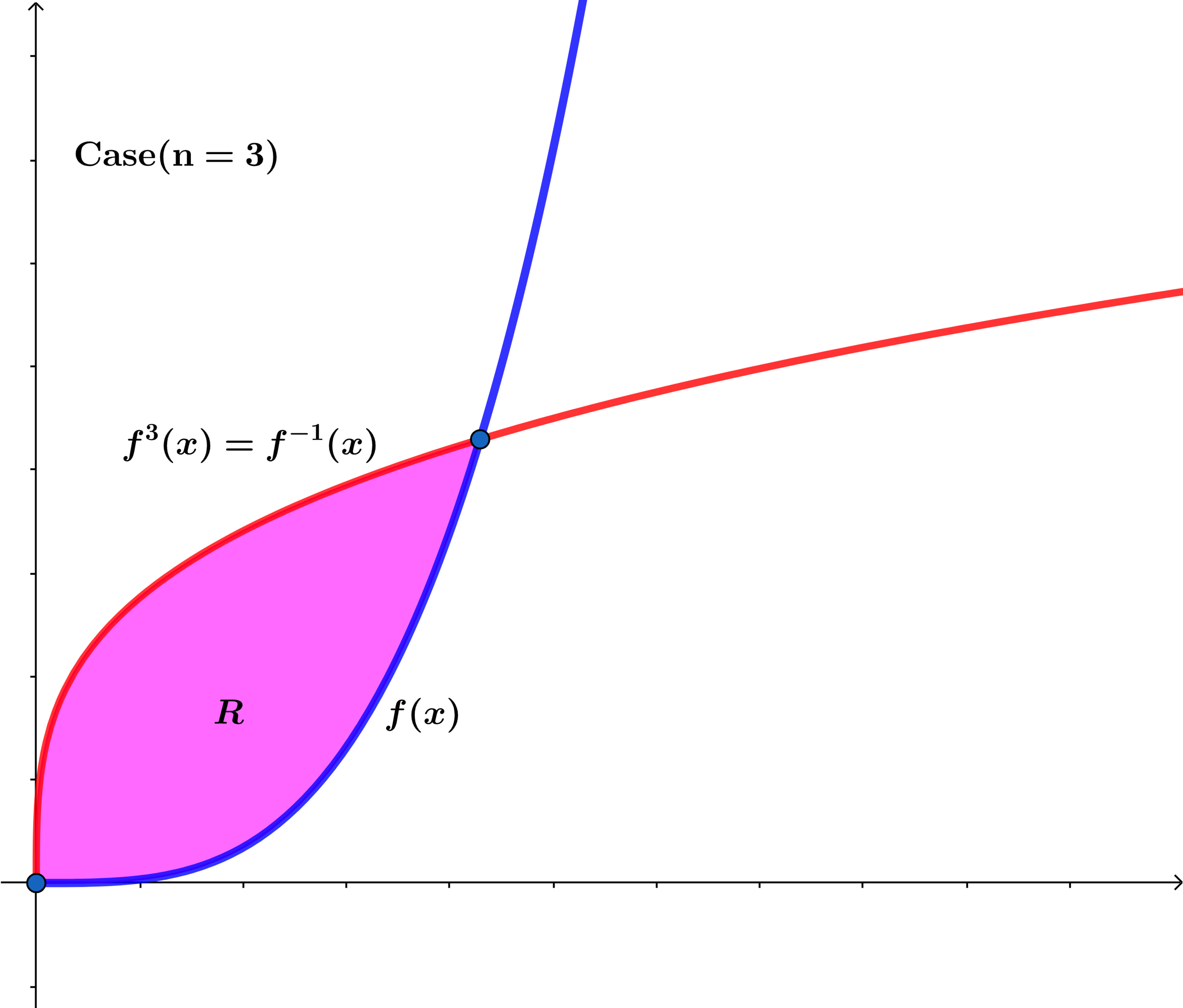
Let be a positive integer and , and , where is the th derivative of .
(1) Find the area of the region bounded by and as a function of .
(2) Using Find the area of the region above bounded by and to eight decimal places.
The answer is 2.46889797.
This section requires Javascript.
You are seeing this because something didn't load right. We suggest you, (a) try
refreshing the page, (b) enabling javascript if it is disabled on your browser and,
finally, (c)
loading the
non-javascript version of this page
. We're sorry about the hassle.
f ( x ) = a x b ⟹ f n ( x ) = a m x b − n where m = b ( b − 1 ) ( b − 2 ) ∗ ∗ ∗ ( b − n + 1 )
and f − 1 ( x ) = a b 1 1 x b 1
For x b − n = x b 1 ⟹ b − n = b 1 ⟹ b = 2 n + n 2 + 4 for b > n − 1 .
For a m = a b 1 1 = a b − n 1 ⟹ a b − n + 1 m = 1 ⟹ a = ( m 1 ) b − n + 1 1
⟹ f ( x ) = ( m 1 ) b − n + 1 1 ∗ x b
and
f n ( x ) = m b − n + 1 b − n x b − n = f − 1 ( x )
f ( x ) = f − 1 ( x ) ⟹ x b − n ( m b − n + 1 b − n − ( m 1 ) b − n + 1 1 x n )
x = 0 and for x ≥ 0 ⟹ x = m n 1 for case n even.
⟹ The area A = ∫ 0 m n 1 f − 1 ( x ) − f ( x ) d x = ( b − n + 1 1 ) m n 2 − ( b ( b − n + 1 ) 1 ) m n 2
= ( b − n + 1 1 ) ( m n 2 ) ( b b − 1 ) =
( b − n + 1 1 ) ( b ( b − 1 ) ( b − 2 ) ∗ ∗ ∗ ( b − n + 1 ) ) n 2 ( b b − 1 )
Note: You could have used the Gamma function if so desired.
For n = 3 we have:
b = 2 3 + 1 3 ⟹ The area A = ( 1 3 − 1 2 ) ( 2 9 + 3 1 3 ) 3 2 ( 1 3 + 3 1 3 + 1 ) ≈ 2 . 4 6 8 8 9 7 9 7 .